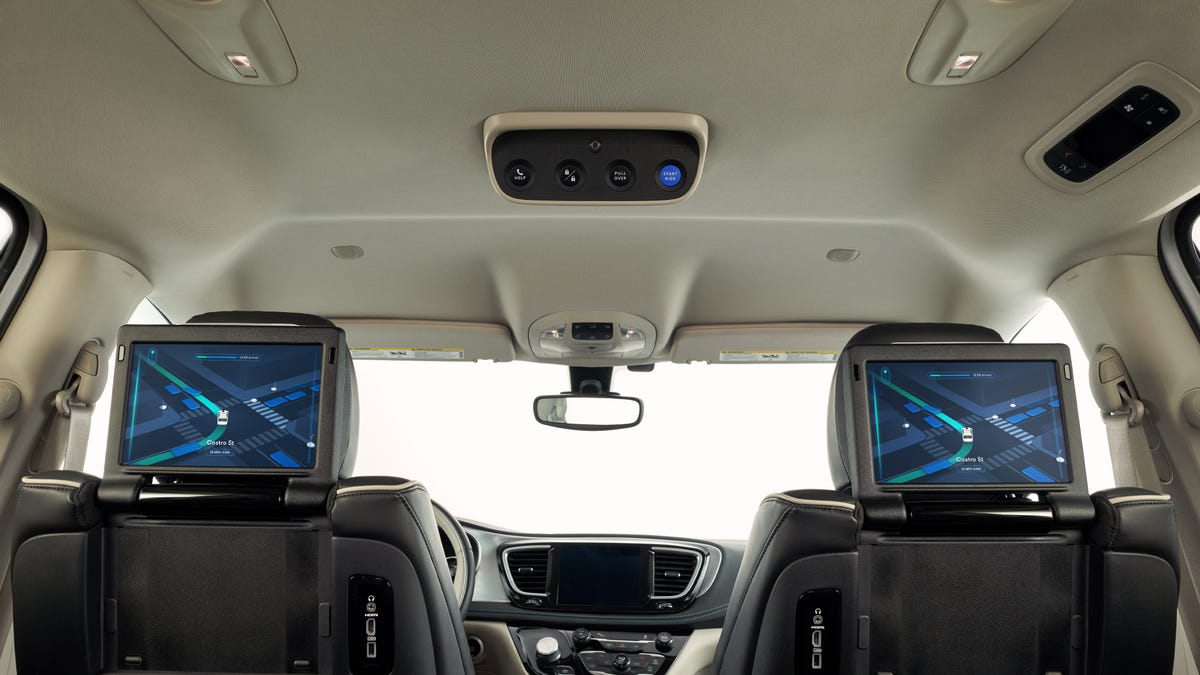How Waymo is defining the UI of autonomy
Getting a car to drive itself is an incredible challenge, but making those smart cars interact with humans is no small task. Waymo's designers are paving the way.

It's easy to envision a glamorous autonomous future, all of us whisked from place to place, stress-free, in comfortable living rooms on wheels like those conceptualized in the Mercedes-Benz F 015. I can already see myself stepping in, speaking my destination, and then taking a nap in the back while my virtual driver handles everything.
The reality, of course, is a lot more complicated. What if your car is sitting at an intersection waiting and you don't know why? What if you see a cyclist coming up behind you and you're worried the car hasn't spotted it? Or, what if you simply want to talk to a human being? Waymo has a team of designers working on those issues and more, and for the first time the company is showing off the fruits of that labor.
Juliet Rothenberg is Waymo's product manager for user experience. Speaking at a tour of Waymo's testing facility, she described her role as "creating new customs and norms for how people interact with a new driver, which is now the car itself." That's an important concept to get your head around to understand the problem: that it isn't just a car anymore, it's a disembodied driver, too.
When you ride in a car with a driver, whether it's someone who you trust or don't trust, you're constantly taking cues from them. Some are pretty direct, like discussing where you're going and how they plan to get there. Others, though, are far more subtle; things like the driver moving their hands on the wheel to anticipate making a left turn, or turning their head to watch that wayward cyclist who's approaching at a worrying speed.
These things help to establish trust in that driver's ability. In the early days, at least, people won't trust autonomous cars. And without hands to move on steering wheels nor heads to turn and look, sending those subtle cues is difficult. "Predictability and communication are key to trust," said Rothenberg, and Waymo's User Experience (UX) team is working to build that trust by providing the communication necessary.
"X View" -- a raw look at all the sensor data coming from the car overlaid onto satellite imagery.
Ryan Powell is Waymo's head of UX design, and a major part of his job is translating what the car sees and processes into something an average passenger would not only be able to understand, but would want to see when they're going for a ride. The raw feed of data from all the car's sensors populates an internal visualization called X View. This, as you can see above, is a little busy for your average passenger.
"It's all about curation," Powell said, "knowing what to show, how to show it, and how to highlight it." His team has come up with a simplified view that provides much the same information but in a way that's easier to parse. Instead of displaying the raw data from the lidar scanners, for example, the car only highlights pedestrians, going so far as to identify cyclists with a blue glow to show that it knows the difference.
Other cars are blue boxes floating over the simplified map, while the current route is shown as a wide, blue line -- not unlike the sort of thing you'd see in a racing videogame. The displays will also show updates on progress, messages like "Yielding to pedestrians" when waiting at a crosswalk, so that there's no doubt why the car isn't proceeding. The screen even flashes to indicate the direction of the turn signal.
The simplified interface view shown to Waymo passengers, looking for all the world like a videogame.
The display is augmented by a line of four simple buttons along the ceiling, with the most important being a blue one labeled RIDE START. This is what kicks things off, and if Waymo plays its cards right, it could be just one part of the new UX concepts that define a new era of mobility. We've all come to expect things like steering wheels and accelerator pedals, but the first cars had steering tillers, not wheels, and in the Model T it's the brake pedal that sits on the right.
It's impossible to say whether things like blue buttons on the ceiling will become expected elements of autonomous cars of the future, but today's research will define the elements that give tomorrow's passengers confidence as they step into the back seat of a driverless car. And, as we get closer and closer to the day where this technology is truly ready, it's confidence that may define success or failure for companies like Waymo.

